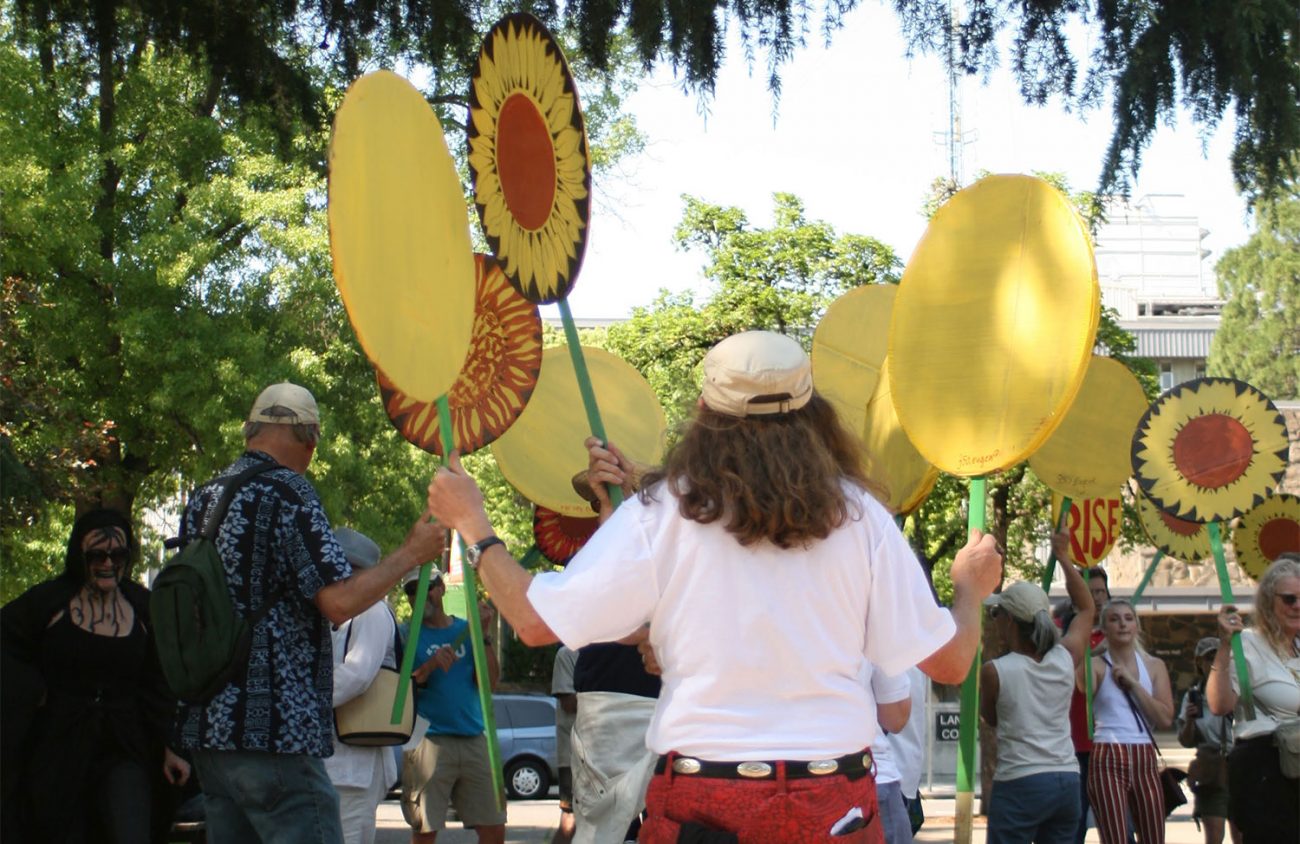Beneath the hot sun on Friday, May 31, some 30 participants gathered at the Wayne L. Morse U.S. Courthouse. They were ready to march and demonstrate the need to pursue alternative energies to fix the climate crisis.
At the head of the demonstration was Gabrielle Raviolo, a passionate senior in Environmental Studies at the University of Oregon. Raviolo is a theatrical leader, with a shock of short pink hair, who takes issue with the Department of Energy’s recent dubbing of fossil fuels as “freedom fuel.”
Raviolo was concerned, as an activist, that protesting fossil fuels could lead to a possible “enemies of freedom” identification in the future for protesters.
That’s why she helped organize the demonstration and the march, which targeted the Jordan Cove liquefied natural gas export facility and pipeline as well as the risks of crude oil on railways and of fossil fuel infrastructure projects. The sign she held, which later collected signatures of support, called for Rep. Peter Defazio and Sen. Ron Wyden to not only sign the “No Fossil Fuel Pledge,” but also to denounce the language the DOE created surrounding the fossil fuel discussion.
Raviolo, a senior fellow with Friends of the Earth, expressed frustration concerning the transportation of oil through Eugene two times a week by train. “What would happen if there was a crash?” she asked. “We would be flooded.”
The demonstration began with a chant: “No more coal, no more oil, leave the carbon in the soil!”
350 Eugene’s Debra McGee spoke of the recent conclusion that atmospheric CO2 levels reached 415 ppm, 100 ppm higher than the safe level. “This is global warming,” she said. “Here, now.”
The Jordan Cove Pipeline project has created controversy in Oregon for nearly 14 years. Its construction would mean a further fiscal investment in the fossil fuel industry and also a possible case of eminent domain, McGee says. “Tell me if a private organization has the right to take your land?” she asked.
Jerry Samaniego is no stranger to the idea of renewable energy, especially solar. In 1977, his father opened a solar energy store. “I guess you could say solar has been feeding me for 40 years,” he joked. Samaniego took his time with the microphone to discuss some common misconceptions. “I’m here to tell you solar does work,” he promised, as a sales representative for Energy Design, a solar energy operation in Eugene.
But what about cost? “Get rid of subsidies,” someone in the crowd said. Government subsidies play a major role in the energy game. By getting rid of bailouts, Samaniego said, a “level playing field” would develop.
When it comes to alternative energy, Raviolo says she doesn’t want to reinvent the wheel. “Why wouldn’t we want to do things that work?” she asked. That means solar and wind, not nuclear power.
“There’s never been a solar spill,” someone in the crowd joked.
The group began marching down East 8th Avenue. A stream of activists, young and old, toted signs and sunflowers. They headed for the Wayne Morse Free Speech Plaza, where the demonstration reached its zenith.
Along with their signage, the activists carried black cloaks, black blankets, black shawls. They draped their shrouds on the ground and lay on them, symbols of the stain of oil spills.
Dancer Vanessa Fuller led a “healing dance,” a cleansing ritual to escape the pollution that fossil fuels were imposing. The cloths were left behind, and they began to dance to songs like “Walking on Sunshine.”
The group danced and formed a conga line to the music. “People are disheartened,” said substitute teacher and 350 member Teresa Mueller, “and this is an act of defiance.”
This story has been updated.
